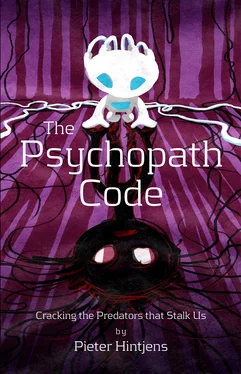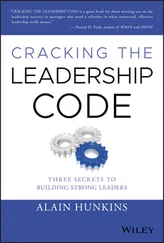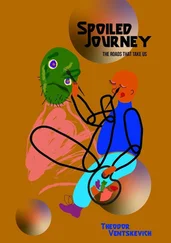❂ You work late, as usual. Maybe you can finish that report. First, the presentation for the boss. You hope she doesn’t trash it like last time. Quiet despair fills your mind. You wonder what slide transition to use. Too many options.
❂ When you get home, it’s late and the kids are already asleep. Your wife is silent in the living room. You sit on the other couch, and open your laptop. One more day and it’s Friday.
You can estimate how many psychopaths (M) are active in any given organization. Start with an estimate of 4% of total workforce (W). Multiply by three for finance-related businesses (F = 1 or 3). Now imagine you are a client, and give the organization a "ripoff factor" of one to five (R = 1 to 5). One is your local baker. Five is Comcast. Multiply your estimate by the ripoff factor. Round down to the nearest whole number. You now have your estimate.
Given the model of psychopath as profession, at what ages does psychopathy start and stop? Can we see the traits of psychopathy in juveniles and senior citizens?
These questions are valid because the traits run in families. To know someone, look at the family members of all ages. If you are in a relationship with someone, you are in one with his parents, siblings, and cousins.
They are also important because Mallory often has children. If psychopaths make up 4% of the population, then 8% of families have a psychopathic parent. Half of Mallory’s children become like him, on average. I’ve explained my hypothesis that adult psychopathy needs an incubating environment to differentiate.
This means that if we can recognize the traits in the parent, and in the children, we can intervene. I’ll explore the ifs and hows of this in more detail in Escape from Jonestown . Let’s say you are in a position to do something. Your main question is, "is this child growing up to be Mallory?"
The traits of psychopathy in children are well studied. Yet the focus is on aggression. For instance, Dr. David Rettew in his talk "Sociopathic Behavior in Children" [77] https://www.med.uvm.edu/ahec/downloads/School_Nurse_GrandroundsJan10.pdf
, refers to "aggression" 36 times. In effect he equates aggression with psychopathy. For sure, some psychopaths are aggressive and violent. Yet it is not a defining trait.
The bulk of successful psychopaths are rarely violent. Their aggression lives under the surface. They rarely punch or kick. They smile, and they whisper. Only when they feel violence is more effective, when they have no other options, will they use it. And even then, they will use verbal and emotional violence first. Above all, a psychopath’s violence is pragmatic and targeted.
I’d expect young Mallory to show a sharp learning curve in hiding his predatory nature. I’d expect to see him learn to make others admire him. I’d expect him to practice on smaller, weaker children, when no adult was watching. I’d expect his teachers to adore him and praise him.
The model of young psychopaths as out-of-control future delinquents seems so wrong. It describes young Mallory acting on primitive impulse, unsocialized and dysfunctional. It is a model without hope. I think we make it worse when we frame child psychopathy as a "medical problem." If drugs and therapy do not work on adult psychopaths, why consider them for children?
Mallory the adult started young and sharpened his talents on his schoolmates. He learned to not get caught. So here is my list of traits for young Mallory, before and during differentiation:
❂ He is charming and can be angelic. His teachers tend to adore him.
❂ He is popular with other children, dominant, and independent.
❂ He teases and bullies smaller and younger children for fun.
❂ He is not afraid of larger children, nor of disapproval. He does what he likes.
❂ He despises the school rules, though he avoids getting into trouble.
❂ He leads a small gang of other children. They experiment with breaking the rules.
❂ He asks other children to give him their toys, and other possessions, and they do.
❂ He steals from other children, and takes small items in shops.
❂ If you ask other children what he is like, no-one has a solid answer.
❂ He never asks others how they are doing or what they are feeling.
❂ He is as likely to show violence and aggression as other children. It is how he aims it that is different.
❂ His empathy does not develop. He laughs when others fall and hurt themselves.
❂ He is chaotic with his and others' possessions. He does not enjoy organized order.
❂ On line, he stalks and bullies those he feels are weaker and vulnerable.
❂ His family shows chaos and narcissism in one parent.
So the adult Mallory emerges over time. I suspect that by the age of 12 or so, it is too late to change the trajectory he has taken. The full adult Mallory emerges at 15 or so, as he builds a career in taking from others and getting away with it.
What about old Mallory? At what age does a psychopath retire? The answer is "never." Mallory’s genes make her more resistant to cancer, heart disease, diabetes, and other illness. She manages, to her last breath, to draw her family in to support and look after her. I wrote that psychopaths divide and torture their children. One of the benefits for Mallory is that she keeps her scapegoats around for decades, serving her.
The seductress side of Mallory disappears when she hits 45 or so. She tries to keep the interest going with plastic surgery, tight clothes, wigs, and cosmetics. She looks more and more grotesque. Yet she pays no attention to others' advice. She is never wrong.
If you look at older Mallory you may see these traits:
❂ Her children surround her and look after her. They ignore or despise their other parent. It is Mallory who is the center of attention.
❂ People exist to serve her. This goes beyond her children. She collects a circle of admirers who look after her. Her social life is about recruiting and keeping this circle alive.
❂ She does nothing sincere for other people. If she does charity work or community work, it is always a display, in public view. She despises her neighbors and ignores them as far as she can.
❂ Her main hobby is watching television soap operas. She does not keep house plants or cats. If her family give her a companion dog, it becomes sick or disturbed.
❂ She hoards relics: photographs, clothes, old possessions. Her home is not tidy and functional. It is chaotic and full of arbitrary things left for years in the same spots.
❂ She may be frail and on the verge of hospitalization for years, decades. Her retirement revolves around phases of ill health. Yet she lives to a surprising age.
❂ She leaves no inheritance to her children. Maybe she never worked. Or, if she had wealth, she leaves it to a charity, to teach her children a lesson.
❂ She feels no reason to talk to her family unless she needs something. Yet she has no compunction about interfering in their lives at any time, and without notice.
In this chapter I’ve explained where and how to spot Mallory. Is there a single reliable way to tell if a given person is a psychopath? The answer is "no." It depends so much on the state of your relationship with the person, and the context. All your data are lies. Every accusation and observation is wrong or biased. The truth only emerges after time, as the average of many errors.
Can we spot psychopaths in the wild? Yes, we can. It is even quite simple. Watch groups and couples in public settings. Observe without opinion. You will see the narcissists, the rule breakers, the charmers and the mimics. You will see some people always triggering others, yet rarely responding. This is how psychopaths spot and avoid others "playing their game."
Читать дальше












